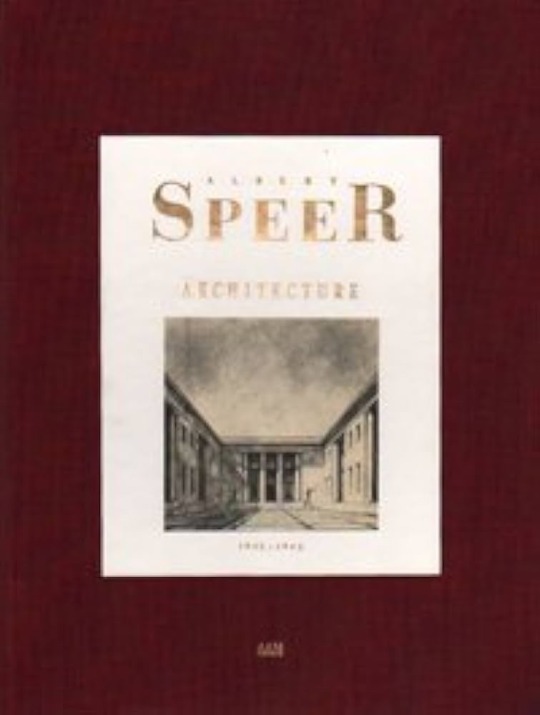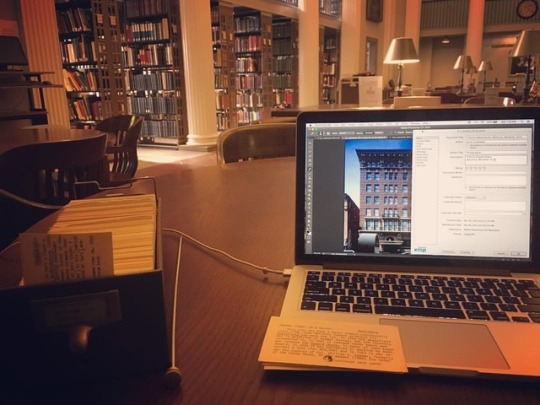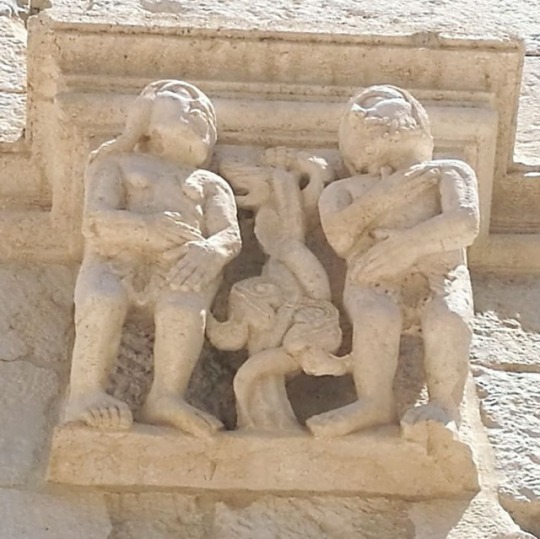#buildinghistory
Explore tagged Tumblr posts
Text
*Real Estate Fun Fact:*
In 1916, a man named William Levitt revolutionized real estate by introducing assembly line construction techniques, giving birth to the concept of mass-produced suburban housing. This marked the beginning of Levittown, the iconic American suburb!


Landvoice || 801-998-2423 || [email protected] || Landvoice Live Onboarding/Training: https://www.landvoice.com/onboarding/signup
#RealEstate#HousingHistory#Levittown#SuburbanLiving#FunFacts#HomeBuilding#PropertyDevelopment#Innovation#UrbanPlanning#CommunityLiving#RealEstateTrivia#Homeownership#ArchitecturalMarvels#HousingTrends#BuildingHistory#Neighborhoods#LandDevelopment#HousingRevolution#PropertyTrivia#HomeDesign#AmericanDream#propertyinvestment#openhouse#housingmarket#dreamhome#realtorlife#househunting#homesweethome#luxuryhomes
1 note
·
View note
Text
From Ancient Walls to Modern Skyscrapers
From Ancient Walls to Modern Skyscrapers: The Unseen Forces of Architectural Evolution

#techhistory#old building#architechture#ArchitecturalEvolution#AncientToModern#BuildingHistory#innovativedesign
1 note
·
View note
Text

Stone masonry is more than a craft; it's a heritage. 🏰 For centuries, stone has been used to create some of the most iconic structures in history. At JS Shoker, we honor this rich tradition by bringing the timeless art of stone masonry to modern projects. Let us add a touch of history and elegance to your next build.
0 notes
Text


Architectural Dissonance: Leon Krier, Albert Speer, and the Complex Legacy of Building Power
Leon Krier’s decision to write a book about Albert Speer may seem puzzling, especially given Krier’s own architectural associations—most notably with James Stirling on the Staatsgalerie in Stuttgart and his admiration for KF Schinkel’s Altes Museum in Berlin. Yet, the question isn’t merely about Berlin or Speer, but about the deeper layers of architectural influence and identity.
Krier, a prominent figure in British and European architectural discourse, could be exploring more than just a stylistic admiration for Speer’s work. His interest might lie in the contradictions Speer represents: an architect who achieved monumental grandeur yet was complicit in a totalitarian regime. Krier could be questioning not only Berlin’s architectural legacy but also the mindset of any architect or citizen who engages with history’s darker chapters. Is there an inherent style language attached to museums, or is it a reflection of jealousy over accomplishments that, despite their origins, still resonate today?
Admiring the “Reich’s architectural imagination” raises provocative questions. Is it possible to separate aesthetic achievement from political morality? And what of Speer’s role in constructing a symbolic future for a regime that sought timelessness through architecture? Krier’s engagement with these questions might also reflect a concern with how architecture, particularly in the UK, is implicated in our own histories that we might prefer to forget. Perhaps Krier sees a parallel between Speer’s monuments and certain British works that, though not tied to tyranny, bear uncomfortable cultural associations.
This book, however, is not just about Speer or Berlin—it is a study in cultural intersections. The historical ties between Belgium, the UK, and Germany, and the influence of royal patronage on architecture, create a backdrop for Krier’s critique. Architecture, at war within itself, becomes a battleground of ideological tensions, where influences from Speer, Schinkel, and Wren are in constant dialogue. The architecture profession in Krier’s view is not merely about building; it’s about navigating these tensions between memory, identity, and political power.
Is Krier’s goal to provoke a reckoning with uncomfortable architectural histories? His engagement with Speer could suggest an attempt to question whether it’s possible to draw inspiration from tainted sources without glorifying them. The dialogue between Krier and Peter Eisenman, for example, mirrors a larger conversation in architecture—one that pits tradition against modernism, autonomy against state power, and ultimately, the creation of mythologies.
Krier’s voice in this discussion might appear muted, not because of a lack of passion, but because his focus lies in a larger cultural critique. He is not elevating Speer’s legacy but rather using it as a tool to dissect architecture’s role in shaping national identity and power. The book becomes a reflection on how architects have long borrowed, learned, and built from elsewhere—whether through formal education or through whispered dialogues in spaces like Wren’s St. Paul’s Cathedral.
In the end, Krier’s engagement with Speer is not an endorsement but an inquiry into the complexities of architecture as both art and political instrument. This “art of misdirection” is indeed part of the architectural process—a profession steeped in mythology and survival. Whether Krier’s critique is understood as treasonous or as a necessary conversation, the future of architecture depends on how we engage with, temper, and confront our past. For those who truly matter, there remains hope that architecture will continue to illuminate rather than obfuscate.
#ArchitecturalCritique #LeonKrier #AlbertSpeer #CulturalIdentity #ArchitecturalLegacy #ArchitectureAndPower #HistoricalArchitecture #ArchitecturalTheory #ArchitectureDebate #BuildingHistory
0 notes
Text
Algo suena mejor en la perla de Europa del Este. Budapest esconde joyas por descubrir y esta suena como una orquesta. El miembro más nuevo de la creciente cartera de hoteles de lujo de vanguardia de la ciudad es un paraíso de estilo vibrante en un edificio histórico ubicado a solo unos pasos de la Basílica. El Aria Hotel ofrece un ambiente único y armonioso creado por el diseñador húngaro Zoltán Varró, con un aire de elegante sofisticación equilibrado por una atmósfera relajada.
Te llevo a conocer su historia en mi nueva sección de @thenorthplacemag @ariahotelbudapest
#FlaviaTomaello #besthotels #BudapestEscape #luxuryhotel #roomservice #buildinghistory #architecturaltales #journeythroughtime #hiddenstories #storytelling #hiddenluxury #budapesthotel #magivalmoments #dreamscometrue #weathersmiles #discoverbudapest #breathtakingviews #Buda #Pest
0 notes
Photo

Fun fact: Sand and gravel have been used in construction for thousands of years! Join the tradition of excellence by choosing Willow Materials as your trusted supplier. Your project's success awaits! 🏗 #BuildingHistory #ConstructionMaterials #TrustWillowMaterials
0 notes
Photo

Glanz, Würde und Geschichte alter Bücher. #books #history #buildinghistory #buildings #elements #architecture #highculture #culture #heritage #bauen (hier: Vienna, Austria) https://www.instagram.com/p/CHmsLciAmni/?igshid=lmeklvljgn8p
0 notes
Photo

Starting my long overdue research at MdHS. #bmoreblockbyblock #mdhs #furlonglibrary #research #passanooneillfile #cardcatalog #buildinghistory #metadata #newyear
#cardcatalog#mdhs#research#furlonglibrary#passanooneillfile#newyear#bmoreblockbyblock#buildinghistory#metadata
9 notes
·
View notes
Photo

It hit me today, this book is 95 years old! It is probably the oldest thing in my house, yet the information it contains is still relevant and accurate to the trade. #history #buildinghistory #past • . . . . #literature #oldbooks #knowlege #audels #audelscarpentersandbuildersguide #mathneverlies #renovate #remodel #renovation #homeimprovement #trim #millwork #tools #finishcarpenter #interior #finecarpentry #home #finishcarpentry #homerenovation #carpenter #carpentry #woodworking #woodworker #woodwork #framersareadyingbreed #finehomebuilding #finewoodworking #firstedition
#millwork#homerenovation#carpenter#renovate#audelscarpentersandbuildersguide#carpentry#remodel#woodworking#past#buildinghistory#history#framersareadyingbreed#renovation#home#firstedition#woodwork#interior#knowlege#literature#trim#finishcarpenter#oldbooks#finecarpentry#tools#finewoodworking#mathneverlies#finehomebuilding#audels#homeimprovement#woodworker
0 notes
Photo

It’s not every weekend you get to excavate at a giant stone pineapple. I had a great weekend learning new skills and meeting new people at #BuildingHistory (at Dunmore Pineapple)
0 notes
Text
Museums of Chicago
We selected a few museums in Chicago and thoroughly talked about the history of their founding. While it is hard to pinpoint data for every specific instance of development, we envisioned how the general structure of the museum and the reason for its founding would be responsible for the type of people who attend it. Additionally, we put on our literary caps to determine where different characters from the books we read this past quarter would end up if given the chance to attend a museum.
The Art Institute of Chicago- 111 South Michigan Avenue
The Art Institute moved to its Beaux-Arts building on Michigan Avenue after the World’s Columbian Exposition in 1893. It is easily accessible by CTA buses, the ‘L’ in the Loop, and the Metra at Millennium Station. There are two bronze lions given as a gift by Mrs. Henry Field for the museum’s opening. The Museum contains a growing encyclopedia collection and a ��264,000 sq ft Modern Wing designed by Renzo Piano. The museum is partners with the School of the Art Institute of Chicago (SAIC) (http://www.saic.edu/about/historyandquickfacts/buildinghistory/)
The organization, Chicago Academy of Design, was founded in 1866. Their primary goal was to run a free school with its own art gallery. This school opened up on Dearborn Street but soon moved to 66 West Adams Street, which opened on November 22, 1870. The Great Chicago Fire destroyed this building in 1871, and the Academy soon confronted massive debt. After much desperation, the Academy went into bankruptcy and the Chicago Academy of Fine Arts bought its assets at an auction. Later, this organization renamed itself to the Art Institute of Chicago. In 1882, Charles Hutchinson was elected as president and he transformed the Institute to turn it into what it is today. The organization purchased a lot on the southwest corner of Michigan Ave and Van Buren Street for $45,000, and another adjacent lot was purchased as the galleries expanded. Architects wanted a building that would create an “impressive presence” on Michigan Ave, so the Institute pressed for the Chicago City to commision a building for the World’s Columbian Exposition to be held in 1892-1893. After the building was used for the Expo, it could then be converted into the Art Institute itself. The city agreed, and this is primarily the museum we see today.
Initially, the museum was free, which allowed more access to its facilities. However, the people who had access to the museum were still limited because it was a matter of wealth of time in this case. Most people were heavily working in sweatshops and could not afford to take time out of their schedule to see an art museum. As the museum got more popular, they started to charge for admittance. Today, it costs at least 14 dollars for admission but is free if one is an Illinois resident or a student at a university in Chicago. Though these provisions still provide access to the general public, it is still very limiting, and there is an inherent privilege for the groups that have this free access. Given the grand presence of the Art Institute building and the commercialized and flashy attractions built around it, it is now seen as an elite, “touristy” attraction. In 2014, Tripadvisor named the Art Institute the world’s best museum, which is a great promotional name to have, but at the same time elevates the museum’s unique status and removes the building from being a truly global and ubiquitous place to access art.
The Smart Museum of Chicago
David and Alfred Smart (1892-1952 and 1894-1951, respectively) launched the Esquire magazine and built an innovative publishing business in Chicago. They both were very rich and successful entrepreneurs during the Depression in the 1930s. They had an initial private magazine company, but people were stealing these magazines, so they created a public magazine called Esquire that was very cheap and exposed the public to fine arts like literature. They died in the 1950s. The University of Chicago wanted to open an art museum in the late 1920s, but they couldn’t because of the Great Depression. The Smart family was asked to fund this project due to their interest in the arts and public engagement. (https://vimeo.com/107279140)
The founding gift came from the Smart Family in 1967 and was originally associated with UChicago’s art history department but ultimately became its own unit of the university in 1983.
Collections include modern art exhibits, Asian art, European art, Contemporary art. Now, the museum collaborates with other RSOs on campus and local community engagement programs
The building is very minimalist and modern, to add emphasis to the paintings that are being displayed.
Though the concept of upper level university linked museums are tricky with regards to concepts like gentrification, the Smart Museum tries to constantly engage with the local Chicago community through educational outreach activities in local schools. Though it’s wonderful that the Smart Museum has an inherent cognizance of the position it serves, the fact that it is at one of the world renowned institutions gives off an elite vibe, and the primary demographic of people who attend these museums are students of the university.
The Smart Museum is located on the campus of the University of Chicago, which is most accessible by car and CTA buses.
The Field Museum
Like the Art Institute of Chicago, the Field Museum was also commissioned as part of the World’s Columbian Exposition in 1890. Several individuals responsible for national museum exhibits by the government saw the possibility of creating a great museum, appointed JW Ellsworth of the foreign affairs committee to spearhead this initiative
Initially, in 1893, there were strong editorials that called for this museum. Directors of the exposition even called the museum “The Columbian Museum of Chicago” initially and wanted this public meeting as a way to “adopt measures to establish in Chicago a great museum that shall be a fitting memorial of the World’s Columbian Exposition and a permanent advantage and honor to the city.” As committee members and officials of the exposition got more exhibits and collections to be featured in the museum, they realized they needed a larger endowment to fund the museum permanently, and that person, in 1893, was Marshall Field.
Features many anthropological collections, and there are extensive collections made by the department of anthropology of the exposition. Similar to the Art Institute of Chicago, this museum has an entrance fee of about 17 dollars. There are free days throughout each season for families and children, but these events often get overcrowded.
(https://www.fieldmuseum.org/about/history)
The Field Museum is most accessible by car and CTA buses.
Chicago Cultural Center
The Chicago Cultural Center opened in 1897 as the central public library of Chicago, until 1977 when it became the Chicago Cultural Center. It is located on the Magnificent Mile, across the street from Millennium Park, and is accessible by CTA buses, the ‘L’, and the Metra.
The center has two wings-- one four stories and one five stories tall. Each has its own glass dome. The exterior facade is limestone and is in the Neo-Classical Style. The two main entrances and interiors feature decorations that celebrate the Italian renaissance, including Doric columns, brightly colored marble, arches for windows and doors, and mosaics. In contrast to the pure, Italian Renaissance inspiration, there are a few very pronounced imitations of Venice, including a staircase meant to be Venice’s Bridge of Sighs, and an art gallery that is a replica of an assembly hall in the Doge’s Palace.
The cultural center is the official reception venue of the Mayor and the city. Any Presidents or leaders go on official visits to Chicago are greeted at the cultural center by city officials. The main attraction is the spectacle of the architecture, meant to impress visitors, foreign dignitaries and common citizens alike. Over 1,000 events and exhibits are put on at the cultural center each year. The Chicago Cultural Center is unique in that its building has been free and open to the public since its opening.
Chicago Architecture Foundation
The Chicago Architecture Foundation was founded in 1966 to preserve Chicago landmarks, and eventually turned into the educational institution we know it as today. Since 1992 its headquarters has been in the Railway Exchange Building on South Michigan Avenue, across the street from the south wing of the Art Institute. It is accessible by CTA buses, the ‘L’ in the Loop, the Metra, and many tourism bus companies.
The foundation has one permanent exhibit that is free and open to public called Chicago Model. This is a large diorama of the city plan that is constantly updated with new and demolished buildings. It is reminiscent of the Panorama of the City of New York located in the Queens Museum, on the grounds of the 1939 New York’s World Fair and was made in 1964 New York’s World Fair.
Ticketed tours depart from the headquarters and use the city of Chicago as their museum. Once the barriers of money and mobility are crossed, the tours take attendees out and travel through public space, mostly outdoors but sometimes indoors, and informs them of the history and meaning behind buildings and streets they might pass through in their everyday lives.
DuSable Museum of African American History
The DuSable Museum of African American History is a museum dedicated to African American history and culture. The collection consists of 13,000 items including art and personal affects of African Americans and activists who fought for African American rights.
The museum was originally on South Michigan Avenue on the ground floor of a residential building which had at one time been a club and a boarding house. The museum is now on East 56th Place and Cottage Grove in the Washington Park neighborhood of the Southside. It is accessible by CTA but it is not very convenient for travelers. Buses get travelers closest to the museum, but the ‘L’ and the Metra are over half a mile away. It is most accessible by car. The building the museum is now housed in was built to be a parks administrative building in the 1910s but when donated to the museum by the Chicago Park District. The museum also has a 466-seat auditorium for various performances and events for museum attendees and the neighborhood. The museum is not free but has discounted admissions rates for Chicago residents.
Characters and Respective Museums
The Baron — Chicago Cultural Center
The Baron would love to appreciate the splendor and spectacle of the the Chicago Cultural Center, which borrows architecturally from the Classical tradition just like the Baron borrows his ancestry from families that are not his own. He cares deeply about appearances, which is the primary function of the cultural center-- to make an impression on any visitor who walks through the door
Narrator of Man of the Crowd — Museum of Contemporary Art
The Narrator of Man of the Crowd gravitates towards large groups of highly diverse and interesting people, which he could easily find in and around the Museum of Contemporary Art. He would find a person or group that peaks his interest and follow them wherever they may go, most likely down the Magnificent Mile.
Aschenbach— Art Institute of Chicago
Aschenbach is drawn to the Greek statues after seeing the perfection that is Tadzio, making a trip to the Art Institute and its collection of Greek sculpture something that he would appreciate.
Jurgis— Balzekas Museum of Lithuanian Culture
Jurgis knows he has to shield his true culture in the workplace and a place that celebrates Lithuanian culture would be a good place to express himself and organize activism among his fellow Lithuanian workers.
Conclusion
Museums as public spaces in Chicago have a long history dating back to the Columbian Exposition. Their variability in terms of accessibility speak to the politics of transportation and class privilege. The museums we have described here and many others in Chicago offer wonderful, educational content, and we believe that some of the characters we’ve discussed in class would have either enjoyed some of these museums or that their personality matches the spirit of a given museum. Over the last century Chicago has increased its public cultural programming through these museums and hopefully more, accessible offerings will continue to operate for the people of Chicago to enjoy.
0 notes
Photo

If you ever visit the Swabian Castle in Trani it is easy to miss this little gem of a sculpture while trying to avoid the blistering sun in the central courtyard. Several of these small sculptured consoles indicate that a roof construction must have been present once. These types of architectural 'leftovers' are not strange for a castle. This castle was built by order of Holy Roman Emperor Frederick II (1194-1250) between 1233 and 1249. Afterwards, the castle was repurposed and modified many times, such as in the early 1500s, when complete areas were demolished and newly constructed. Or consider the period 1860-1975, when the castle served as a prison and had to be adapted for that specific function. Only in 1998 was the castle restored to its current state. The figures of Adam and Eve depicted here are most likely part of the earliest design, as they are typical for the somewhat clunky Romanesque style. It is only in the Gothic style (e.g. the work of Nicola Pisano) that a development towards naturalism starts to become a central theme. The first half of the 13th century may seem a late dating for Romanesque sculpture, but it is not so strange if you consider that the Gothic style originated in France around the mid-12th century and that Trani is located all the way south in 'the heel of Italy'. #technicalarthistory #architecture #buildinghistory #castle #medievalart #13thcentury #13thcenturyarchitecture #medievalcastle #13thcenturyart #romanesque #romanesqueart #sculpture #stonesculpture #trani #puglia #southitaly #holyromanempire #romanesquesculpture #oldtestament #adamandeve #christianart #art #arthistory #stone #building #history #courtyard #religiousart #culturalheritage (bij Castello Svevo di Trani - Organizzazione Governativa) https://www.instagram.com/p/BpK6hu1CpNX/?utm_source=ig_tumblr_share&igshid=8h3uk1zs1n7u
#technicalarthistory#architecture#buildinghistory#castle#medievalart#13thcentury#13thcenturyarchitecture#medievalcastle#13thcenturyart#romanesque#romanesqueart#sculpture#stonesculpture#trani#puglia#southitaly#holyromanempire#romanesquesculpture#oldtestament#adamandeve#christianart#art#arthistory#stone#building#history#courtyard#religiousart#culturalheritage
0 notes
Photo

Chipping away, one block at a time... #research #mdhs #library #cardcatalog #passanooneillfile #buildinghistory #architecture #baltimorehistory #baltimore #bmoreblockbyblock
#buildinghistory#bmoreblockbyblock#baltimorehistory#baltimore#research#passanooneillfile#cardcatalog#library#mdhs#architecture
1 note
·
View note